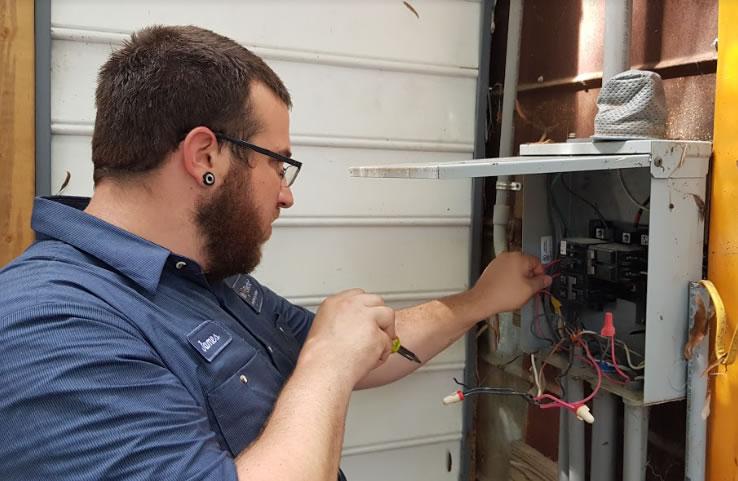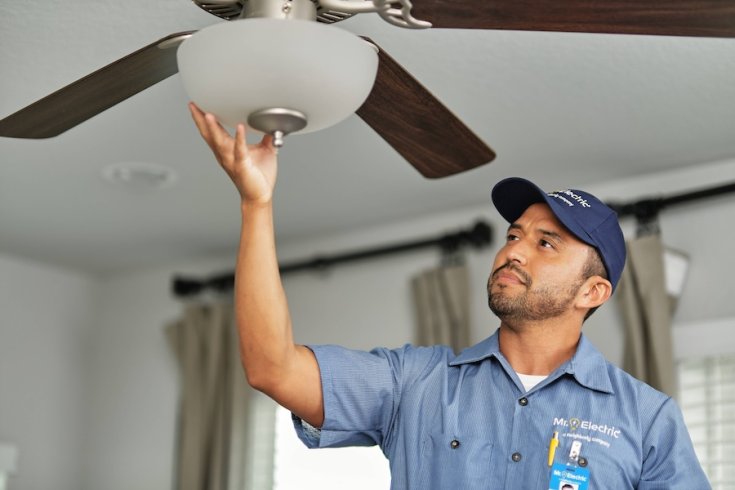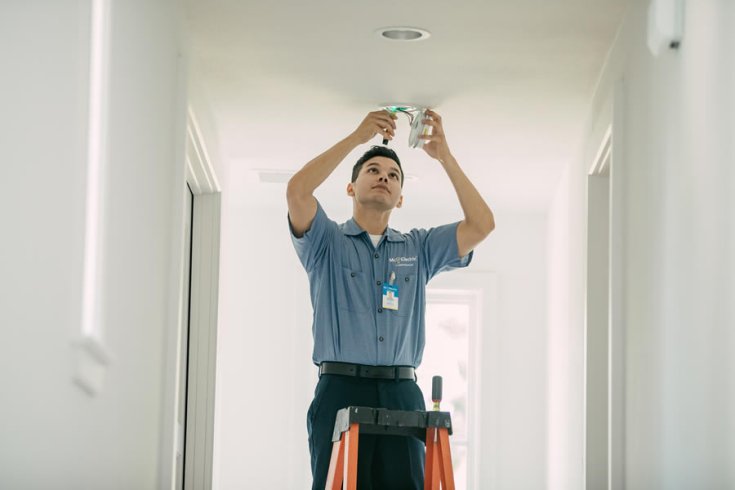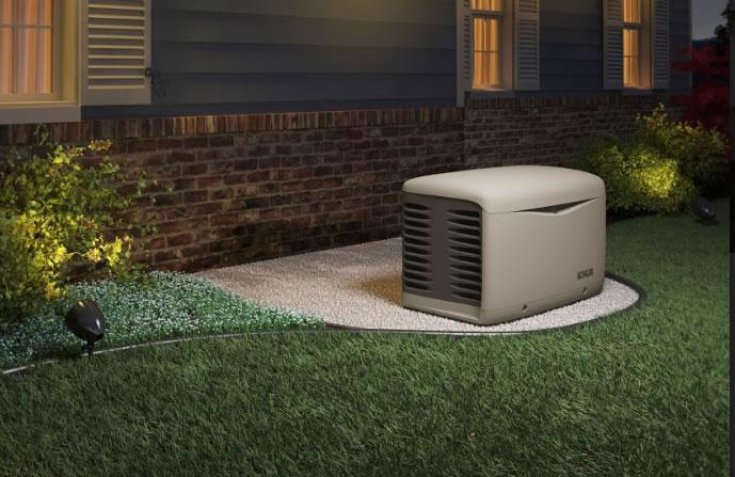Homeowners across the country take on projects like circuit breaker installation, thinking it’s as simple as following a few online tutorials. But electrical work requires an understanding of the entire system behind it. When things go wrong, the consequences aren’t minor. Mr. Electric is here to help you avoid trouble. One small mistake can lead to serious safety issues or an emergency electrical repair. When DIYers make assumptions about installation, they usually end up with damaged appliances, overloaded circuits, or fire risks that could have been avoided. Whether you're trying to cut costs or are feeling confident in your toolbox skills, these are the top five mistakes that consistently put homes and people at risk. Keep reading to find out where things go off track and how to avoid an emergency.
1. Using the Wrong Type or Size of Breaker
Choosing the wrong breaker is one of the fastest ways to damage your electrical system. Every circuit in your home is designed to handle a specific load. If you install a breaker rated too high, it won’t trip when the circuit is overloaded. That might seem like a win, but the problem is, your wires can overheat, which puts your home at risk of fire. On the other hand, if the breaker is rated too low, it will trip constantly and cut off power when it’s not necessary, and make you frustrated. This mistake is incredibly common because many DIYers don’t fully understand how to calculate load demands or interpret wire gauge ratings. They rely on guesswork or base their decision on whatever breaker is available at the local hardware store. Proper installation requires precise matching of breakers, wiring, and load capacity.
2. Failing to Properly Secure Connections
Loose connections inside an electrical panel are a hidden hazard. You might tighten a lug screw just enough to feel snug and assume it’s fine. But the electrical current flowing through a loose connection generates heat. Eventually, that heat can melt insulation, damage the breaker, or cause arcing. In some cases, the breaker may stop working altogether without you even knowing. What makes this mistake worse is how hard it can be to detect. The breaker snaps in, the wires are inserted, and power comes on. But unless the connection is properly torqued to manufacturer specifications, you’re gambling with your safety. Electricians use torque screwdrivers and follow strict procedures during electrical service work for a reason. DIYers usually don’t have these tools or the awareness to use them properly.
3. Ignoring Panel Compatibility and Brand Requirements
Not all breakers are compatible with all panels, even if they seem to fit. This is one of the more dangerous mistakes people make. Each breaker panel is designed to work with specific models and brands of circuit breakers. They might physically snap into place, but that doesn’t mean they’re making full electrical contact or that they’ll trip reliably in an emergency. The problem is, counterfeit or off-brand breakers can easily end up in your shopping cart if you're not paying attention. They’re cheaper, widely available, and often mislabeled as "universal." But using incompatible breakers voids your panel’s warranty and violates code in most places. It also puts your entire electrical system at risk. A breaker that fails to trip during a fault is a life safety issue. Electricians always check model numbers and panel specifications before installing or replacing breakers.
4. Overloading the Panel With Too Many Breakers
Every panel has a limit, not just in terms of amperage but in how many circuits it can safely support. DIYers sometimes overpopulate panels by adding tandem breakers or trying to squeeze in additional circuits where there’s no room. Electrical codes restrict how many circuits a panel can host based on its design, not just the number of slots available. Cramming too many breakers into a panel can overheat bus bars and create crowding that makes future electrical repair work dangerous and difficult. It can also lead to unreliable power distribution or nuisance tripping that’s hard to diagnose. In many cases, DIYers doing circuit breaker installation don’t even realize their panel is already at capacity. This kind of oversight can be expensive to correct later, especially if damage occurs.
5. Working Without Shutting Off Main Power
Some homeowners assume turning off the individual circuit they’re working on is enough. Others assume rubber-handled tools or dry conditions will keep them safe. Unless you fully shut down the main power, you’re still working inside a live panel, and that means live bus bars and the risk of serious electrical shock or death. For DIYers, there’s no safe margin. One accidental slip of a screwdriver or a metal tool contacting the wrong spot can lead to severe injury. Proper electrical service starts with respecting the power you're working with. That means shutting down the main breaker, verifying everything is de-energized, and testing before touching anything.
Get a Professional Installation Today
DIY projects appeal to homeowners for all kinds of reasons, including budget constraints, curiosity, or confidence from fixing other parts of the house. The margin for error in electrical work is much smaller than with plumbing or carpentry. Mistakes are easy to make and hard to detect, and unlike cosmetic issues, electrical problems can destroy property and endanger lives. The reality is that most people taking on an installation don't know how deep the learning curve goes. Professional electricians in Littleton follow strict guidelines and rely on codes and inspections to keep systems safe. When these jobs are done right, they protect your home and everyone in it. Electrical work is serious business. It doesn’t forgive small mistakes, and it doesn’t offer second chances. Call Mr. Electric. When you’re ready to make sure your home’s electrical system is safe and reliable, contact us to schedule your inspection or electrical service.








